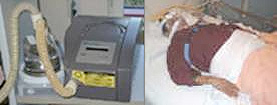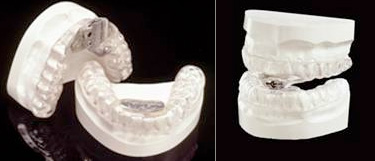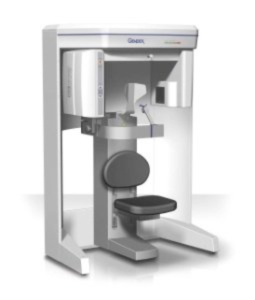Sleep Apnea
|
First described in 1965, sleep apnea is a breathing disorder characterized by brief interruptions of breathing during sleep. It owes its name to a Greek word, apnea, meaning "want of breath." Obstructive sleep apnea occurs when air cannot flow into or out of a person's nose or mouth although efforts to breathe continue. Sleep apnea is a serious, potentially life-threatening condition that is far more common than generally understood. As common as adult diabetes, it affects more than twelve million Americans, according to the National Institutes of Health. An estimated 5 in 100 people, typically overweight, middle-aged men, suffer from sleep apnea. In a given night, the number of involuntary breathing pauses, or "apneic events," may be as high as 20 to 30 or more per hour and can last anywhere from 10 seconds to three minutes. These breathing pauses are almost always accompanied by snoring between apnea episodes, although not everyone who snores has this condition. Sleep apnea can also be characterized by choking sensations. Although an individual may not recall waking up frequently during the night, deep restorative sleep is disrupted temporarily. As a result, sleep deprivation, early morning headaches, and excessive daytime sleepiness can occur. Early recognition and treatment of sleep apnea is important because it may be associated with irregular heartbeat, high blood pressure, heart attack, and stroke. If left untreated, other complications may include memory problems, weight gain, impotency and headaches. Moreover, untreated sleep apnea may be responsible for job impairment and motor vehicle crashes. Risk factors include being male, overweight, and over the age of forty, but sleep apnea can strike anyone at any age, even children. Children with sleep apnea may snore, squeak, and thrash while sleeping. During the day, a child who suffers from sleep apnea will be sluggish or termed "lazy." In older children, sleep apnea occurs in those children who are overweight or who have unusually large tonsils and adenoids. Since snoring is not normal for any child, parents should report this to their physician. Yet because of the lack of awareness by the public and healthcare professionals, the vast majority remains undiagnosed and therefore untreated, despite the fact that this serious disorder can have significant consequences. Fortunately, sleep apnea can be diagnosed and treated. Several treatment options exist, and research into additional options continues. Sleep apnea seems to run in some families, suggesting a possible genetic basis. Children may also grind their teeth in their sleep, making such loud noises they cannot duplicate when awake. Fortunately, most cases of snoring and grinding with children resolve over time without treatment. Causes of Sleep Apnea Certain mechanical and structural problems in the airway cause the interruptions in breathing during sleep. In some people, apnea occurs when the throat muscles and tongue relax during sleep and partially block the opening of the airway. When the muscles of the soft palate at the base of the tongue and the uvula (the small fleshy tissue hanging from the center of the back of the throat) relax and sag, the airway becomes blocked, making breathing labored and noisy and even stopping it altogether. With a narrowed airway, the person continues his or her efforts to breathe, but air cannot easily flow into or out of the nose or mouth. Unknown to the person, this results in heavy snoring, periods of no breathing, and frequent arousals (causing abrupt changes from deep sleep to light sleep). Ingestion of alcohol and sleeping pills increases the frequency and duration of breathing pauses in people with sleep apnea. Effects Of Sleep Apnea Because of the serious disturbances in their normal sleep patterns, people with sleep apnea often feel very sleepy during the day and their concentration and daytime performance suffer. The consequences of sleep apnea range from annoying to life-threatening. They include depression, irritability, sexual dysfunction, learning and memory difficulties, and falling asleep while at work, on the phone, or driving. It has been estimated that up to 50 percent of sleep apnea patients have high blood pressure. Although it is not known with certainty if there is a cause and effect relationship, it appears that sleep apnea contributes to high blood pressure. Risk for heart attack and stroke may also increase in those with sleep apnea. Symptoms of Sleep Apnea For many sleep apnea patients, their spouses are the first ones to suspect that something is wrong, usually from their heavy snoring and apparent struggle to breathe. Coworkers or friends of the sleep apnea victim may notice that the individual falls asleep during the day at inappropriate times (such as while driving a car, working, or talking). The patient often does not know he or she has a problem and may not believe it when told. It is important that the person see a doctor for evaluation of the sleep problem. Ask Your Physician or Dentist About Sleep Apnea If sleep apnea is suspected, scheduling an appointment with a physician is recommended. The physician will take a medical history and a referral for a night in a sleep evaluation laboratory will be required. It is often helpful for the doctor or sleep specialist to interview the bed partner or other members of the household. Diagnosis of Sleep Apnea In addition to the primary care physician, pulmonologists, neurologists, or other physicians with specialty training in sleep disorders may be involved in making a definitive diagnosis and initiating treatment. For a diagnosis of sleep apnea to be made, each abnormal breathing episode must last at least 10 seconds and occur at least 5 times for each hour asleep. Doctors call this the Respiratory Disturbance Index (RDI). Diagnosis of sleep apnea is not simple because there can be many different reasons for disturbed sleep. Several tests are available for evaluating a person for sleep apnea. Polysomnography is a test that records a variety of body functions during sleep, such as the electrical activity of the brain, eye movement, muscle activity, heart rate, respiratory effort, air flow, and blood oxygen levels. This test is used to diagnose sleep apnea and to determine its severity. The Multiple Sleep Latency Test (MSLT) measures the speed of falling asleep. In this test, patients are given several opportunities to fall asleep during the course of a day when they would normally be awake. For each opportunity, time to fall asleep is measured. People without sleep problems usually take an average of 10 to 20 minutes to fall asleep. Individuals who fall asleep in less than 5 minutes are likely to require some treatment for sleep disorders. The MSLT may be useful to measure the degree of excessive daytime sleepiness and to rule out other types of sleep disorders. Diagnostic tests usually are performed in a sleep center, but new technology may allow some sleep studies to be conducted in the patient's home. Treatment of Sleep Apnea There are actually a number of treatment modalities for obstructive sleep apnea, not just surgery. These range from weight loss and other lifestyle changes to several surgical procedures. The specific therapy for sleep apnea is tailored to the individual patient based on medical history, physical examination, and the results of polysomnography. Medications are generally not effective in the treatment of sleep apnea, although some antidepressants and asthma medications have been found to relieve sleep apnea because they are respiratory stimulants. Oxygen administration may safely benefit certain patients but does not eliminate sleep apnea or prevent daytime sleepiness. It is important that the effectiveness of the selected treatment be verified; this is usually accomplished by polysomnography. Combinations of these therapies are also used. Behavioral Therapy Behavioral changes are an important part of the treatment program, and in mild cases behavioral therapy may be all that is needed. The individual should avoid the use of alcohol, tobacco, and sleeping pills, which make the airway more likely to collapse during sleep and prolong the apneic periods. Weight loss is often an effective treatment for snoring-related sleep apnea. Even just a few pounds can improve breathing during sleep and can reduce the number of apneic events for most patients. In some patients with mild sleep apnea, breathing pauses occur only when they sleep on their backs. Using pillows and other devices that help them sleep in a side position is often helpful. Physical or Mechanical Therapy Nasal continuous positive airway pressure (CPAP) is the most common effective treatment for sleep apnea. In this procedure, the patient wears a mask over the nose during sleep, and pressure from an air blower forces air through the nasal passages. The air pressure is adjusted so that it is just enough to prevent the throat from collapsing during sleep. The pressure is constant and continuous. Nasal CPAP prevents airway closure while in use, but apnea episodes return when CPAP is stopped or used improperly. Variations of the CPAP device attempt to minimize side effects that sometimes occur, such as nasal irritation and drying, facial skin irritation, abdominal bloating, mask leaks, sore eyes, and headaches. Some versions of CPAP vary the pressure to coincide with the person's breathing pattern, and others start with low pressure, slowly increasing it to allow the person to fall asleep before the full prescribed pressure is applied.  This is a CPAP machine, with humidifier and hose The gold standard for treatment of sleep apnea is presently with the CPAP machine. However, only 10 - 20% of CPAP wearers are still compliant after one year. If you are one of these, an oral appliance may be necessary to help open your airway and reduce the severity of your sleep apnea. Dental appliances that reposition the lower jaw and the tongue have been helpful to some patients with mild sleep apnea or who snore but do not have apnea. Possible side effects include damage to teeth, soft tissues, and the jaw joint. A dentist is needed to fit the patient with such a device. A sleep study with a physician is recommended for proper diagnosis of sleep apnea prior to having an oral appliance fabricated by a dentist. This will also help in receiving coverage for the oral appliance by medical insurance. Most of these devices are composed of two separate arches (upper and lower ). This custom oral appliance, worn while sleeping, holds the lower jaw forward and open, preventing the tongue and throat tissues from collapsing the critical airway. There is a 96% success rate (snoring) for people treated with these appliances. These appliances reduce sleep apnea associated health risks without the need for surgery, medications, or other therapies. However, to be effective, these appliances must be used. It should be noted that, for a minority of patients, sleeping with an oral appliance can take some getting used to.  Surgery Although several surgical procedures are used to increase the size of the airway, none of them is completely successful or without risks. More than one procedure may need to be tried before the patient realizes any benefits at all. For some patients, however, there are negative side effects, or apnea symptoms are not resolved. Some of the more common procedures include removal of adenoids and tonsils (especially in children with enlarged tonsils), nasal polyps and other growths, or other tissue in the airway and correction of structural deformities. Younger patients seem to benefit from these surgical procedures more than older patients. Once again, with children, many times snoring problems resolve without treatment. Uvulopalatopharyngoplasty (UPPP) is a procedure used to remove excess tissue at the back of the throat (tonsils, uvula, and part of the soft palate). The success of this technique may range from 30 to 50 percent. The long-term side effects and benefits are not known, and it is difficult to predict which patients will do well with this procedure. Laser-assisted uvulopalatoplasty (LAUP) involves using a laser device to eliminate tissue in the back of the throat. Like UPPP, LAUP may decrease or eliminate snoring but not sleep apnea itself. Elimination of snoring, the primary symptom of sleep apnea, without influencing the condition, may carry the risk of delaying the diagnosis and appropriate treatment of sleep apnea in patients who elect LAUP. To identify possible underlying sleep apnea, sleep studies are usually required before LAUP is performed. 3D Image
Your smile...its one of the first things people notice about you. But if you have poor quality or missing teeth, your smile may be one of the first things you want to hide from the world. Now it is time to stop hiding. Now may be the time to start thinking about a new and better smile. Changing lives though dentistry is what we do at Dallas Dental Arts. Whether you need whiter teeth, a new filling, or are suffering with the misery of bad teeth or bad breath, we are focused on solving your dental problems. Everyday, we try to provide high-quality, high-tech and highly compassionate care just for you. Dental Implants and beautiful new smiles in just one dayWhat was impossible just a short time ago we do every day now. Miracles do happen! And in the right situation, you can receive your beautiful new smile in just one day! Advances in dental implant technology and new protocols now make it possible to replace failing or missing teeth with customized replacements immediately. We do it all right here
Patients receive complete, fast, and convenient treatment all in one location. Dallas Dental Arts has an experienced team of dental professionals, 3D CAT scanning technology, and a specialized On-Site Dental Implant Lab, which sets Dallas Dental Arts apart from other dental offices. Dallas Dental Arts is one of the few select dental implant centers in the world to use 3D CAT Scans for diagnosis and treatment planning. It only takes 20 seconds to give us a detailed look at existing teeth, bone, nerves, and tissue. The 3D CAT Scan provides three-dimensional and cross-sectional views that allow us to:
In addition to replacing single, multiple, and failing teeth, Dallas Dental Arts offer Noble Biocare Immediate Function Procedures, including the All-on-4 Procedure, an advanced alternative to traditional dentures. The All-on-4 procedure can replace a full arch of teeth in one day, using only four implants and many times without bone grafts.. That saves you time and money. Experienced specialistsOur team of experienced dental professionals are trained for extractions, dental implantation, and other surgical techniques as well as the best in cosmetic, and restorative dentistry. We strive to provide technical, educational, and emotional support and answer any clinical or financial questions you might have. Isn't it time to change your smile and your life for the rest of your life? |
